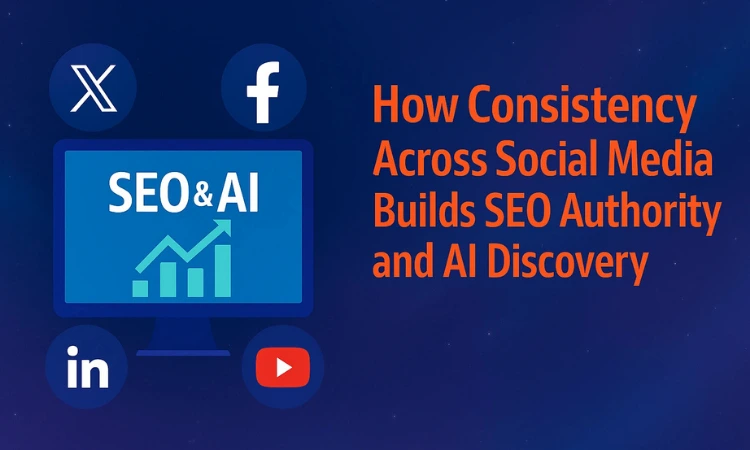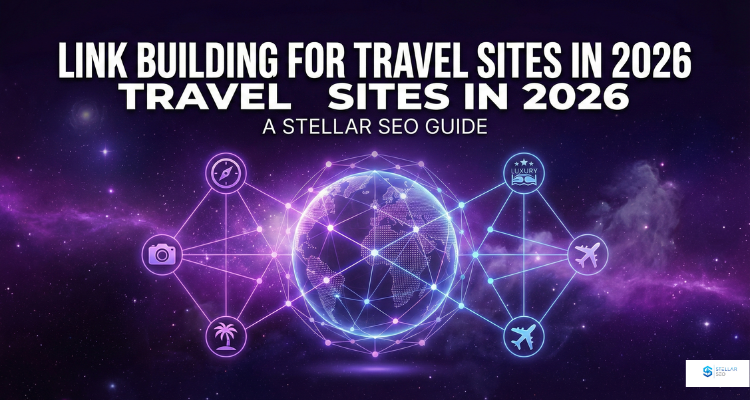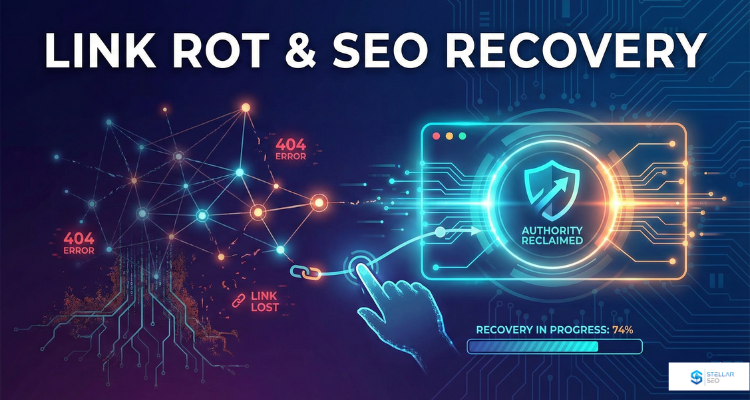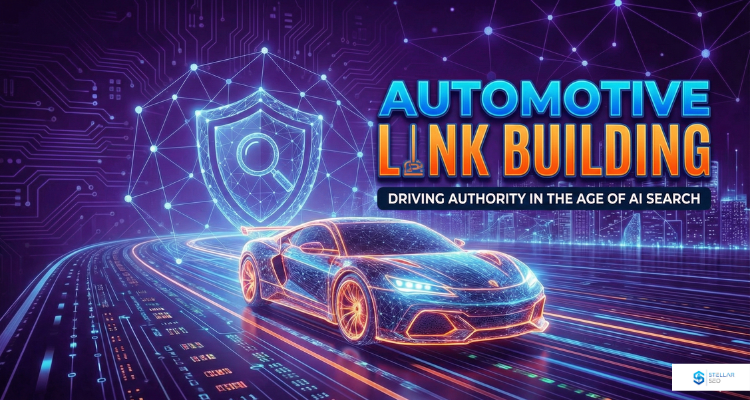Google isn’t the only one mapping your brand anymore. AI systems analyze signals from your website, LinkedIn, and YouTube to understand who you are and what you represent.
Brands that present a consistent identity across these platforms earn stronger recognition from users and greater confidence from the systems ranking them.
In our internal data, brands that coordinated their website, social, and video messaging saw up to 48% higher visibility in AI-generated search summaries and branded citations over 90 days, compared with those who only focused on on-site content.
These figures point to a shift that moves SEO from page-level tweaks to brand-level consistency, where visibility depends on how reliably your message appears across the web.
A Note on Message Consistency vs. Content Duplication
We are not advocating copy-paste. Create platform-specific content that reinforces the same message, topics, and identifiers.
Your website establishes authority through long-form content, LinkedIn summarizes your insights in your professional voice, and YouTube uses visual storytelling to echo your key points.
Each version stands alone, but they all communicate the same story. That repetition across distinct formats is what increases model confidence in your brand, your expertise, and your identity.
How AI Defines Your Brand as an Entity in the Knowledge Graph
AI treats your site as one node in a larger network of posts, videos, and mentions. The more precise and consistent your signals are across that network, the more your brand is trusted.
To classify brands accurately, AI models perform entity recognition to identify people, organizations, and topics across the web.
For example, Google’s patent US10528871B1 describes how a data management system:
“analyzes tokens (e.g., keywords, data segments, etc.) that are included in the data snippet and compares the tokens to the definitions of the known concepts in the knowledge graph,”.
Then uses similarity metrics to determine the most relevant concept.
From our work with clients, we’ve noticed that brands showing up consistently across platforms tend to build stronger entity profiles faster. A 2024 Moz Entity SEO Report found that 64% of brands maintaining uniform schema and social alignment appeared in more AI-generated citations within 90 days.
Connections and Context: The Graph Analogy
Picture your brand as a node in a graph. Every mention, backlink, video, or social post becomes an edge that connects to the main topic. When those connections are relevant and consistent, your brand’s authority grows.
For example, when ‘Stellar SEO,’ ‘link risk management,’ and “Travis Bliffen” co-occur across surfaces, classification improves
Research on entity extraction using transformer models shows that consistent contextual data improves how systems classify and rank entities. When your brand name, topics, and keywords appear together repeatedly, it becomes easier for search and AI systems to correctly classify your brand.
Cross-Platform Reinforcement: How and Where to Share Your Message
Sharing the same core message across trusted platforms amplifies your authority and increases confidence scores. Every channel where your business appears becomes another signal confirming who you are and what you’re known for.
A 2024 Ahrefs Cross-Channel Visibility Study showed that pages connected to at least one verified social profile were indexed 27% faster on average, confirming that cross-platform linkage improves crawl efficiency and visibility.
At Stellar SEO, we start every campaign by making sure the website sets the baseline signals that other platforms then reinforce. It hosts the original, authoritative version of your content, supported by strategic on-page SEO and internal linking that define your brand’s core signals.
LinkedIn offers two powerful ways to reinforce your message.
- Linked posts: Short, conversational updates that summarize your insights and link back to your main article.
- Linked articles: Longer thought-leadership pieces published under your personal profile or company page.
Posting from both locations is essential because search and AI systems treat personal and company pages as separate yet related entities, thereby strengthening confidence in your brand’s authority.
YouTube extends your message into a multimedia format. Video titles, descriptions, transcripts, and pinned comments all provide contextual reinforcement that links back to your main topic and website.
X (Twitter), Threads, or Facebook are useful for short-form commentary and snippets that highlight your key takeaways. While they carry less weight than LinkedIn or YouTube, they signal ongoing activity and topical consistency across your digital footprint.
Medium and Substack are suitable for publishing a new angle or case-driven take on your ideas. These platforms are less prominent in AI citation patterns today, but still help build a broader context for your expertise.
Reddit and niche forums have seen a decline in SEO influence since Google removed the “Top 100” filter. However, selective participation in topic-relevant discussions can still strengthen the association between your brand and its domain. Answer niche questions with original commentary that echoes pillar claims.
Together, these platforms form a confirmation loop that strengthens your brand’s authority. Each unique post or video becomes another point of confirmation that links your brand name, topics, and expertise into one cohesive story. Consistency, not duplication, is what teaches AI systems to associate your brand with authority and relevance.
-
Why Inconsistency Hurts
Inconsistent branding weakens your signal. If your website uses “Stellar SEO,” your YouTube channel says “Stellar Link Growth,” and your LinkedIn page lists “Stellar Marketing Strategies,” algorithms interpret them as separate entities.
Name drift, variations in author names, and mismatched logos fragment your entity and reduce visibility. Even subtle inconsistencies, like shifting taglines or outdated logos, create noise that weakens your signal strength.
-
What the Evidence Suggests
Although AI-centric SEO studies are still emerging, supporting research aligns with this theory:
- The entity-recognition patent mentioned earlier shows how systems classify brands through recurring context patterns.
- Research on patent entity extraction confirms that consistent phrasing and topics improve classification accuracy.
- Projects like DBpedia demonstrate how linking consistent data across multiple trusted sources creates a stronger digital identity.
When applied to SEO, we have found brands that maintain consistent messaging across multiple trusted platforms build stronger entity authority.
Does Social Media Impact SEO?
Yes, social media now has a direct impact on SEO because AI systems evaluate brand consistency across every platform.
Modern search and AI models no longer treat your website, LinkedIn, or YouTube as separate entities. They read them together to decide which brands are credible and what topics they represent.
When your profiles share the same language, visuals, and topical focus as your website, it strengthens your entity signals and helps AI connect your brand to verified expertise.
Social media now directly affects SEO because AI evaluates cross-platform consistency. In the AI-driven search landscape, it’s one of the strongest external signals confirming your identity, authority, and relevance online.
Evidence and Research Supporting the Theory
The connection between consistent brand messaging and AI visibility reflects how modern search engines and large language models process, weigh, and trust information across the web.
-
Search Engines Have Evolved Into Entity-Based Systems
Google and other major engines no longer rely only on keywords. They now identify and track entities such as brands, organizations, and people to understand context and authority. Systems like the Knowledge Graph and Topic Layer use entity-based indexing to determine relevance and credibility.
Patents such as “Contextual Information Extraction for Search Results” (US9009134B2) and “Generating Structured Information” (US10192488B1) describe how Google identifies entities, interprets relationships, and builds structured data around them.
When your brand uses consistent messaging and naming across multiple trusted platforms, it strengthens the signals these systems rely on to classify and surface your content.
-
AI Models Use Reinforcement Across Multiple Sources
AI systems like Google AI Overviews, Bing Copilot, and Perplexity don’t pull information from one source. They cross-reference data across the web to decide which brands or publishers to trust.
A 2023 paper from Google Research titled “Multimodal Entity Linking for Large-Scale Knowledge Graphs” shows that cross-platform consistency increases model confidence when deciding what to cite.
When your brand appears across multiple high-authority sources repeating the same ideas and topics, it’s more likely to be referenced in AI-generated summaries and recommendations.
-
Social and Video Data Are Now SEO Inputs
Platforms like YouTube, LinkedIn, and even X are now integrated into how Google builds brand understanding. Video transcripts, captions, hashtags, and author metadata all contribute to your entity footprint.
A 2024 Stanford study on multimodal retrieval and grounding in large language models found that brands appearing consistently across video and text are viewed as more reliable and contextually grounded entities.
Industry data mirrors these research findings. According to HubSpot’s 2025 State of Digital Branding report, 71% of B2B marketers said that maintaining consistent messaging across all major platforms improved their organic visibility.
Consistent entities are easier for AI to verify and more likely to be surfaced as reliable sources.
This means YouTube descriptions, pinned comments, and social posts using the same language as your website are both engagement tools and reinforcers.
-
The Role of Semantic Reinforcement
Semantic reinforcement is the repetition of your brand’s core ideas across different contexts. Google’s Hummingbird and MUM updates were designed to reward meaning over exact keywords.
When your content, videos, and posts share consistent themes, language, and expertise, you strengthen the semantic links that define your brand’s authority online.
-
Early Data and Case Evidence
Stellar SEO’s internal data shows measurable results when brands align cross-platform messaging.
In one case, a B2B client that synchronized its blog, LinkedIn, and YouTube content around a single expertise topic saw a 38% increase in branded citations inside AI-generated summaries within 90 days.
These findings reflect how search and AI systems prioritize consistent entities across trusted touchpoints. SEO has evolved from optimizing single pages to shaping how the entire web describes your brand.
-
How to Structure and Publish Your Message for Maximum AI Visibility?
If you want AI systems to understand, reference, and recommend your brand, your content strategy must extend beyond your website. You are no longer writing for a single algorithm. You are building a connected network of signals that confirm your authority wherever AI tools look for information.
-
Start With a Defined Brand Narrative
Everything begins with clarity. Define your brand’s core topics, tone, and claims before you publish anything. These become the foundation for your entity’s “story.”
- Choose three to five pillar topics that describe your expertise.
- Create a short brand statement that includes your name, company, and main value proposition.
- Use the same phrasing across your About page, social bios, YouTube descriptions, and author bylines.
This narrative consistency helps AI models recognize your brand as a unified source across multiple domains.
-
Centralize Authority on Your Website
Your website is still the control center. It should contain the most complete and detailed version of your brand narrative. Other platforms then reference and reinforce it.
- Publish long-form blog content that thoroughly covers your core topics.
- Use structured data, schema markup, and internal linking to strengthen entity signals.
- Keep URLs and naming conventions consistent with your off-site profiles.
If you use Rank Math or Yoast, review your schema setup and confirm that your organization name, logo, and social profiles all map correctly in the structured data.
-
Repurpose Strategically, Not Repetitively
AI models reward consistency, not duplication. Each platform should repeat your key messages in slightly different formats.
- Turn blog posts into LinkedIn articles that summarize key takeaways and link back to your main post.
- Convert written guides into short YouTube videos that verbally explain the same topic.
- Publish snippets on X or Threads, highlighting the same core points with a branded tone.
This approach gives AI systems multiple touchpoints that all point to the same entity, reinforcing both topical authority and authenticity.
-
Control Context With Anchor and Meta Consistency
Each time you reference your brand, use consistent anchor text, meta titles, and short descriptions. Slight variations can fragment your identity across search and AI systems.
- Keep your company name and tagline identical in all bios.
- When linking back to your site, use anchors that reflect your main service or expertise, such as “SEO copywriting services” or “on-page SEO experts.”
- Align video titles, meta descriptions, and author names to match your main domain’s structure.
Consistency helps large language models link each mention to the same verified entity.
-
Establish a Publishing Cadence
Repetition over time matters as much as consistency. Algorithms track the frequency and freshness of content across multiple platforms.
- Publish on your website monthly or biweekly.
- Share shorter updates weekly on LinkedIn or Substack.
- Release video summaries every two to four weeks on YouTube.
This rhythm teaches search and AI models that your brand is active, credible, and continuously contributing to its area of expertise.
-
Track Entity Growth Over Time
You can measure whether your efforts are working by tracking how your brand appears across AI and search outputs.
- Search your brand and topic in AI tools like Perplexity and Google AI Overviews.
- Use tools such as Brand SERP Tracker or Kalicube to monitor Knowledge Panel and entity recognition signals.
- Track branded mentions and co-occurrence patterns in Ahrefs and Google Alerts.
If your brand starts appearing more often alongside your target topics, your entity signals are strengthening.
Clarify what consistency really means in this context, before you start building cross-platform visibility.
How to Implement a Multi-Surface Message Reinforcement Strategy?
Once your core brand narrative is defined, the next step is putting it everywhere AI and search systems can find it. This means building a controlled, repeatable process for publishing your message across multiple digital surfaces while maintaining absolute consistency.
-
Define Your Core Messages
Every brand has a few key statements that drive its identity. These are the ideas you want AI systems, search engines, and audiences to associate with your name. Start by identifying two or three foundational claims that represent your expertise or product category. Keep these statements short enough to fit naturally into bios, video intros, and post hooks.
Agree internally on:
- Exact brand name and spelling
- Author names and credentials
- Service and product descriptors
Once set, those identifiers should appear the same way on every platform, from your website schema to your YouTube channel description. This repetition forms the foundation of your entity profile.
-
Build Your Authoritative Source
Each message you publish online should point back to a single, authoritative hub on your website. These are your pillar pages. For every key topic:
- Create one detailed page that explains it thoroughly
- Use structured data like Organization, Person, and Service schema
- Include sameAs links to your verified social and publishing profiles
This structure tells both search and AI systems that your site is the original, authoritative source. Everything else you publish should reinforce that signal by linking back to it.
-
Monitor and Measure Results
Your entity footprint expands as you publish consistently. Track where and how your message spreads across platforms. Use tools like Ahrefs Alerts, Mention, or Brand SERP Tracker to monitor mentions of your brand and topics.
Check AI-driven systems like Google’s AI Overviews, Bing Copilot, and Perplexity to see whether your brand is cited or referenced in summaries.
Exploding Topics found that AI systems are more likely to cite sources that consistently appear across multiple channels, with aligned branding and cross-links.
Measure progress through:
- Branded search volume growth
- Entity mentions in structured data and Knowledge Graphs
- Referral traffic from social and content platforms back to your website
-
Maintain Consistency Over Time
AI models learn from what they can repeatedly confirm. Your brand signals must stay steady even as your message evolves.
Audit your profiles and channels regularly:
- Confirm author names, visuals, and bios match your site
- Refresh pillar content at least twice per year
- Review your schema markup and outbound references to ensure they remain current and accurate.
When your website, YouTube, LinkedIn, and other surfaces all reinforce the same story, AI systems gain confidence in your authority. That confidence directly translates into visibility across search and generative platforms.
Consistency over time is what turns brand repetition into brand recognition, both for humans and for algorithms.
Risks and Pitfalls (and How to Avoid Them)
A well-structured multi-surface strategy can elevate your brand authority, but inconsistency or poor execution can have the opposite effect. Here are the most common mistakes and how to avoid them.
-
Fragmented Messaging
When your tone, claims, or terminology differ across platforms, you create brand confusion. AI models interpret this inconsistency as uncertainty, which weakens your authority. Keep your brand language, voice, and identifiers uniform across all channels. Use a shared brand glossary or internal reference sheet to keep messaging aligned.
-
Content Reuse Instead of Reinforcement
Copying the same content across platforms limits engagement and dilutes your message. Each post or video should offer a fresh angle or format that reinforces your core topic while adding context for that specific audience. Think of every version as a supporting proof point, not a duplicate.
-
Weak Structured Data
Neglecting schema markup or missing “sameAs” links reduces your entity strength. Every key page should include structured data that defines who you are, what you do, and where else your brand exists online. Without it, AI systems have fewer anchors to confirm your identity and expertise.
-
Inconsistent Brand Identifiers
Minor variations, such as using “Stellar SEO” in one place and “Stellar SEO Agency” in another, can fragment your entity signals. Keep your brand name, author names, service titles, and company descriptions consistent everywhere. Double-check that bios, logos, and visual elements align across your site and social profiles.
-
Focusing on Volume Over Relevance
Posting everywhere without a clear plan can look like noise to both users and algorithms. Prioritize platforms where your audience actually engages and where your topics have contextual relevance. Quality, focus, and credibility build authority faster than sheer posting frequency.
Addressing these risks upfront ensures every channel strengthens your authority instead of fragmenting it.
Take Charge of Your Brand Messaging and Build Lasting SEO Authority
The foundation of SEO is changing. Keywords and backlinks still matter, but search engines and AI models are now evaluating something more profound: how consistently your brand presents itself across the digital landscape.
When your website, YouTube, LinkedIn, and social posts all tell the same story, it sends a clear message to both algorithms and people. You become the verified source, not just another voice in the feed.
This approach combines strategic link building services, technical refinement, and consistent brand signals to strengthen your presence everywhere customers find you.
The brands that take the time to define their core messages, publish authoritative pillars, and publish consistently across every surface will be the ones that dominate AI-driven discovery.
Now is the time to review your brand presence, build your pillar content, and ensure your message echoes across every platform that matters. The next wave of SEO belongs to the brands that can stay consistent, visible, and trusted in every corner of the web.
You don’t outsmart algorithms anymore. You help them recognize you faster. Get in touch with our team today to discuss how we can help you build the proper foundation for lasting success.
References & Further Reading
- “How AI is reshaping SEO: Challenges, opportunities, and brand strategies for 2025.” Search Engine Land
- “Entity SEO in the Age of AI Search.” Backlinko
- “Graph-Embedding Empowered Entity Retrieval.” Gerritse et al., arXiv 2020. arXiv
- “AI Search Optimization: 8 Steps to Rank in AI Results.” Surfer SEO
- “What Do AI Overviews Mean for SEO in 2025?” – Exploding Topics. Exploding Topics
- How AI Changed Link Building
- AI SEO Services
- How to Write LLM Optimized Content
- Why Building Authoritative Content Matters for Google and Human Readers













